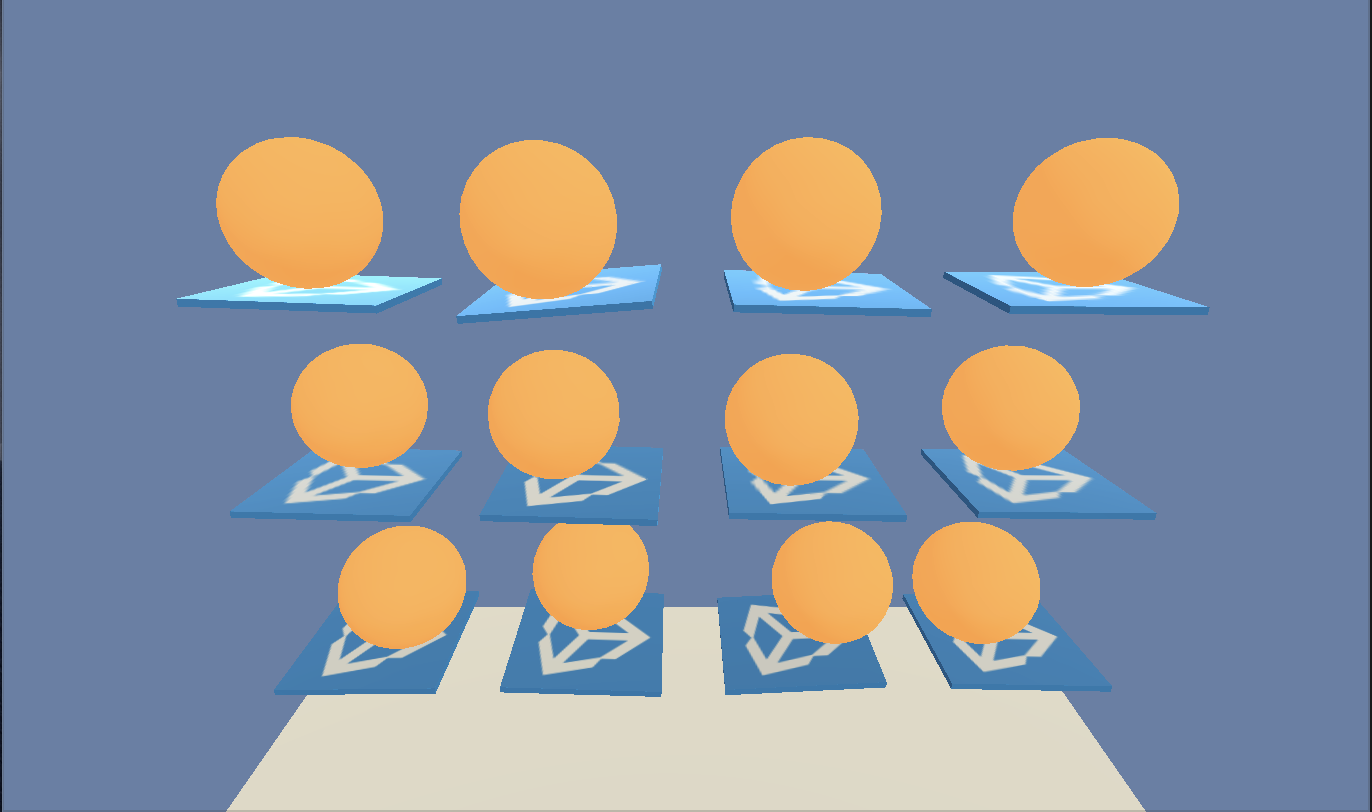5.8 KiB
Training Generalized Reinforcement Learning Agents
Reinforcement learning has a rather unique setup as opposed to supervised and unsupervised learning. Agents here are trained and tested on the same exact environment, which is analogous to a model being trained and tested on an identical dataset in supervised learning! This setting results in overfitting; the inability of the agent to generalize to slight tweaks or variations in the environment. This is problematic in instances when environments are randomly instantiated with varying properties. To make agents robust, one approach is to train an agent over multiple variations of the environment. The agent is trained in this approach with the intent that it learns to adapt its performance to future unseen variations of the environment.
| Ball scale of 0.5 | Ball scale of 4 |
|---|---|
 |
 |
Variations of the 3D Ball environment.
To vary environments, we first decide what parameters to vary in an
environment. These parameters are known as Reset Parameters. In the 3D ball
environment example displayed in the figure above, the reset parameters are gravity, ball_mass and ball_scale.
How-to
For generalization training, we need to provide a way to modify the environment by supplying a set of reset parameters, and vary them over time. This provision can be done either deterministically or randomly.
This is done by assigning each reset parameter a sampler, which samples a reset parameter value (such as a uniform sampler). If a sampler isn't provided for a reset parameter, the parameter maintains the default value throughout the training, remaining unchanged. The samplers for all the reset parameters are handled by a Sampler Manager, which also handles the generation of new values for the reset parameters when needed.
To setup the Sampler Manager, we setup a YAML file that specifies how we wish to
generate new samples. In this file, we specify the samplers and the
resampling-duration (number of simulation steps after which reset parameters are
resampled). Below is an example of a sampler file for the 3D ball environment.
episode-length: 5000
mass:
sampler-type: "uniform"
min_value: 0.5
max_value: 10
gravity:
sampler-type: "multirange_uniform"
intervals: [[7, 10], [15, 20]]
scale:
sampler-type: "uniform"
min_value: 0.75
max_value: 3
-
resampling-duration(int) - Specifies the number of steps for agent to train under a particular environment configuration before resetting the environment with a new sample of reset parameters. -
parameter_name- Name of the reset parameter. This should match the name specified in the academy of the intended environment for which the agent is being trained. If a parameter specified in the file doesn't exist in the environment, then this specification will be ignored.-
sampler-type- Specify the sampler type to use for the reset parameter. This is a string that should exist in theSampler Factory(explained below). -
sub-arguments- Specify the characteristic parameters for the sampler. In the example sampler file above, this would correspond to theintervalskey under themultirange_uniformsampler for the gravity reset parameter. The key name should match the name of the corresponding argument in the sampler definition. (Look at defining a new sampler method)
-
The sampler manager allocates a sampler for a reset parameter by using the Sampler Factory, which maintains a dictionary mapping of string keys to sampler objects. The available samplers to be used for reset parameter resampling is as available in the Sampler Factory.
The implementation of the samplers can be found at ml-agents-envs/mlagents/envs/sampler_class.py.
Defining a new sampler method
Custom sampling techniques must inherit from the Sampler base class (included in the sampler_class file) and preserve the interface. Once the class for the required method is specified, it must be registered in the Sampler Factory.
This can be done by subscribing to the register_sampler method of the SamplerFactory. The command is as follows:
SamplerFactory.register_sampler(*custom_sampler_string_key*, *custom_sampler_object*)
Once the Sampler Factory reflects the new register, the custom sampler can be used for resampling reset parameter. For demonstration, lets say our sampler was implemented as below, and we register the CustomSampler class with the string custom-sampler in the Sampler Factory.
class CustomSampler(Sampler):
def __init__(self, argA, argB, argC):
self.possible_vals = [argA, argB, argC]
def sample_all(self):
return np.random.choice(self.possible_vals)
Now we need to specify this sampler in the sampler file. Lets say we wish to use this sampler for the reset parameter mass; the sampler file would specify the same for mass as the following (any order of the subarguments is valid).
mass:
sampler-type: "custom-sampler"
argB: 1
argA: 2
argC: 3
With the sampler file setup, we can proceed to train our agent as explained in the next section.
Training with Generalization Learning
We first begin with setting up the sampler file. After the sampler file is defined and configured, we proceed by launching mlagents-learn and specify our configured sampler file with the --sampler flag. To demonstrate, if we wanted to train a 3D ball agent with generalization using the config/generalization-test.yaml sampling setup, we can run
mlagents-learn config/trainer_config.yaml --sampler=config/generalize_test.yaml --run-id=3D-Ball-generalization --train
We can observe progress and metrics via Tensorboard.